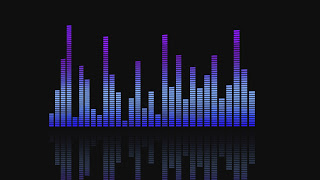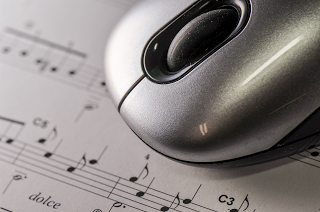In Part One, I discussed how to make the most of your creativity by effectively setting a writing schedule that coincides with your creative peaks during the day, having a plan when you sit down to compose, and how to go about setting up some of the fundamentals in a new piece of music. But there are more ways to enhance your creative output both in quality and quantity than just having a schedule and picking what key to write a piece in.
In this article, Part 2, I will discuss a topic that plagues composers, young and experienced alike, without effective strategies to combat them: The pre-compositional process. I will also give a disclaimer here that I a primarily create art music, although many of these strategies could easily be applied to commercial music or any other genre.
Pre-Composition
Let’s get down to it. I have some bad habits as a composer, habits that make it difficult sometimes to write music. Hopefully this article is a place where you can learn from my mistakes, because I’ve spent a lot of time figuring out how to write better quality music more efficiently. I have found myself resorting, in the past, to sitting down with pencil (or computer mouse) in hand, blank staves in front of me, waiting expectantly for a good idea to jump out of my head onto the page. As if I’m going to start writing notes in measure one, write them in order until the piece is over, and have a satisfactory piece of music sitting in front of me. If you have ever tried this you will probably agree that it is a difficult way to get the creative juices flowing. What you need to start is a concept, an overarching idea, of what the project looks like. The more ideas you can get down in this stage, called the “pre-compositional process,” the less work you have to do when actually writing the music out and getting to that final product. Below are seven strategies that I have collected from professors, friends, and my own experiences on how to pre-compose. I have tried all of these to varying degrees of success, but not every process works for every composer, or even for every piece of music, so I’m sharing all of them with you in hopes that at least one might make you a better creator of sound.
1. Graphic Overview
Have you ever found yourself with a really great idea for a piece of music, but by the time you start writing it the initial idea starts to lose focus? If I were a music doctor, I would probably diagnose you with a forethought deficiency. One method of pre-composition that I have found to be particularly effective at combating this is a graphical overview. This is a really good way to get down a large quantity of general ideas, without becoming bogged down by the specificity of melodic or harmonic plans. You can use lines and other symbols to indicate instruments, register, textures, and essentially any other musical components that you think of, over a linear timeline. This way you can see the shape of a whole piece from the start, and then gradually fill in specific notes, and work gradually towards a final piece of music. This is also a common technique used in the analysis of 20th century art music, because textures and large formal ideas are often easily represented by chronological graphical representation. An example of such that I found useful in the past can be seen in this visual analysis of Stockhausen’s Gesang der Jünglinge (1956), uploaded to YouTube by user carlintuitive: https://www.youtube.com/watch?v=s7HD-95knVQ
2. Word Sketch
A word sketch is something that works well for people who organize their thoughts better in writing than in images, although this method can easily be combined with a graphic sketch. This method involves creating a written outline of a piece, identifying key sections of the piece and subsequent detail in as much depth as you need. For example, you might indicate under a section titled “Development” that the strings enter with an ominous diminished chord while the trumpet plays a blaring melody in the upper register. This particular syntax does not indicate specific notes or harmonies, but it does evoke a clear musical image and mood that will be easily recalled when you are filling in all the details later.
3. Sample Mock-up
This method of precomposition is different than the others listed in this article because it relies on using pre-existing music to create new musical forms. Essentially what this method accomplishes is the creation of a temp track for your music. Begin by thinking of what kind of mood or style of music you would like to evoke with your own piece. Then find a piece of music that already accomplishes this. Cut an excerpt that represents the duration you want for your own piece from this one into your favorite digital audio workstation (DAW).
Continue in this manner for each section of your piece and splice them together with crossfades or other appropriate transitions, and in no time you can have an overview of the shape of the piece you want to create. This is a very fast way to work, and to draw clear inspiration from existing music that you enjoy and wish to emulate. The risk of this method is the same as working with any temp track: it is easy to become limited by the pre-existing musical materials. If you use this method, use it only as a quick, initial step into something that involves more of your original content.
4. Emotive overview
Similar to a word sketch, an emotive overview is something that I have used specifically for collaborative projects. For example, if I were writing a five minute cue in conjunction with a visual media (film or TV), how the music makes the listener feel is going to be very important. If they should feel at ease, stressed out, pumped up, etc., these are all emotive cues that are vital to take into account during the pre-compositional process. Create a sequential map of how the audience should feel over the given duration and make some decisions on how you are going to get there, particularly if the changes in mood are abrupt or there are a lot of them. This also holds true for concert music. In the absence of a multimedia presentation (i.e. traditional concert music), the emotive content almost needs to be more blatant because there aren’t visuals enforcing extra-musical ideas on the observers.
5. Motivic Outline
Jumping right into writing some music down is great if you just came up with a great melody or musical fragment. How you take that motive and manipulate it over time though, is what separates amateur music from professional music. Even a short motive of four notes, when properly placed temporally and masterfully manipulated can drive an entire piece of music. If you don’t believe me, listen to the first movement of Beethoven’s Fifth Symphony. So what you can do is take your motive, and make a list of all the possible ways to manipulate it: transpositions, reordering of notes, retrograde, inversions, rhythmic expansions and contractions, etc. Decide on what versions of the motive you like and how you want to present them over time. Whether you are writing EDM, indie-rock, or neo-classical art music, melody is going to be a driving factor and having a clear picture of how to treat it over time is something to think about up front. This will save you many headaches as you set out to write.
6. Meet with Performers
If you are writing concert music, as I primarily do, meet with performers that play the instruments you are writing for, particularly if you are not familiar with the instruments. This is a good opportunity to build connections and learn what different performers are capable of, because in the rapidly expanding world of extended techniques there are an infinite number of sonic possibilities for instrumentalists. Not only will you be able to test some preliminary compositional ideas with them, but the collaborative nature of such a meeting might also provide you with further inspiration and direction on a piece of music. I have found this method to be particularly useful in my own experience, having recently written a piece for solo bassoon this way. It was severely lacking in direction, but then I met with a bassoonist, talked over some ideas I had for the piece, and within 24 hours the entire thing had been written.
7. Brainstorming
A lot of what has already been said in this article about the pre-compositional process could be categorized as “brainstorming.” However, going beyond strategies for starting to write a piece, actually brain-storming should not be overlooked. Give yourself enough time without distraction to just think about music. Let your mind wander and have liberty to stumble upon interesting inspirations and ideas. In a world that moves very fast technologically, we are often too overwhelmed by notifications, emails, and deadlines to just stop and think for a few minutes. In part one of this article, I talked about how Tchaikovsky would go on a walk every morning, feeding the birds and enjoying nature as he gathered compositional inspiration. It was an integral step in his pre-compositional process. I would highly recommend doing something of similar effect – it will clear the mind in a way that more easily permits creativity. I can almost guarantee that you will find yourself writing more effective music if you do this.
A Few Tips
Don’t spend too much time on this part of the process. If you can, get it all out in one sitting. Breaking up a pre-compositional session might result in losing a train of thought that could take days or weeks to get back, if at all.

About the Author: Lukas Stanley is a composer, violist, and music educator in Michigan. As an active composer since 2006, his works are written primarily for local concert performances. However, he is also passionate about creating new music for film, video games, and other collaborative projects. To find out more or to contact Lukas, visit his website at www.lukasstanley.com









